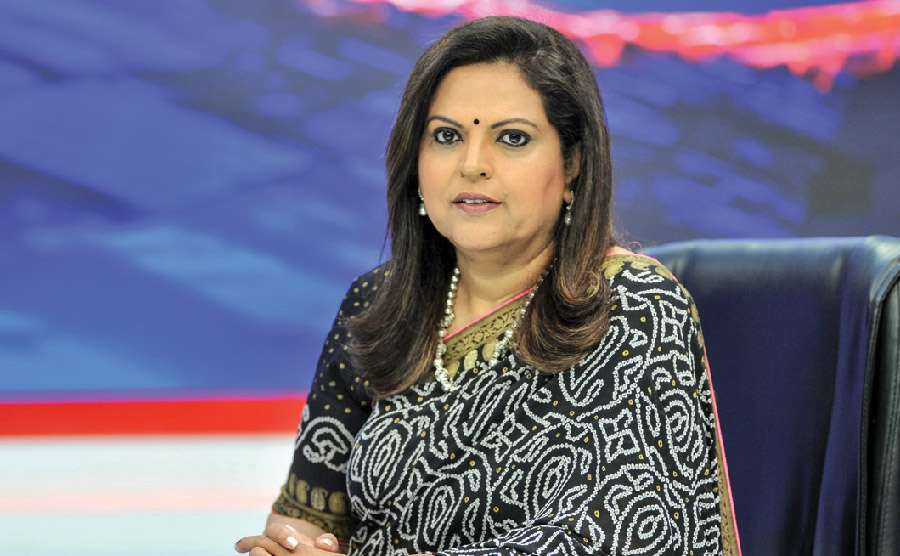Q] You have been with Times Now since its inception in 2005, what would you call the turning point for the channel?
I remember the time when we had to make our first calls introducing ourselves and explaining to people that the Times of India Group was venturing into Television. Today, Times Now has become an institution. The very first big story we put out - ‘Matter of Propriety’-stalled Parliament, the matter went to Supreme Court signed by half the members of Parliament. Everybody sat back and said, ‘Oh, this channel was launched in January and in February it has a show-stopper kind of a story.’ Post that, we did the ‘Office of Profit’ story which led to Sonia Gandhi and Jaya Bachchan’s resignation. So within the first quarter of the launch of the channel, we had established the brand recall value of Times Now. From there on, we have grown from strength to strength. One of our turning point moments was also the 26/11/2008 coverage, but we have always been very strong on exclusive, investigative news stories.
Q] From working with Arnab Goswami to being pitted against him in the 9’o’clock slot years later, from colleague to competitor whose show tops the TRP ratings, how did you come to terms with it?
I haven’t really paid attention to profiles. Some of my stories helped create the brand value of Times Now, and for every debate on Times Now. While Arnab of course has this celebrity status which he did enjoy while he was here, the fact of the matter is that for journalism, there is a distinct end to the face, and then comes in the content which I focus on. When he left, I wasn’t thinking about what am I going to do now… And I had not been someone removed from the world of reporting throughout my career. I am a hungry reporter even today. So during my 9’ o’clock prime time show, when I give political ‘gyan’, it is because I have been on the field. And my experience has never come from sitting in an air-conditioned studio.
Q] Many people call Times Now, Republic and Zee ‘Modi cheer-leading squads’. How are you getting rid of that perception?
These are impressions made by people who don’t have access to news, so they are studying news channels to form their news. We are not the story. We are a reflection of what happens on the ground. Modi is the flavour of the country, there is buzz about him across platforms and the chatter around him is reflected on our channel, how does that make us a Modi cheer-leader? We only reflect the mood. The day the mood shifts, you will see that narrative shifting because we are a reporter-driven channel.
I remember the time when we had to make our first calls introducing ourselves and explaining to people that the Times of India Group was venturing into Television. Today, Times Now has become an institution. The very first big story we put out - ‘Matter of Propriety’-stalled Parliament, the matter went to Supreme Court signed by half the members of Parliament. Everybody sat back and said, ‘Oh, this channel was launched in January and in February it has a show-stopper kind of a story.’ Post that, we did the ‘Office of Profit’ story which led to Sonia Gandhi and Jaya Bachchan’s resignation. So within the first quarter of the launch of the channel, we had established the brand recall value of Times Now. From there on, we have grown from strength to strength. One of our turning point moments was also the 26/11/2008 coverage, but we have always been very strong on exclusive, investigative news stories.
Q] From working with Arnab Goswami to being pitted against him in the 9’o’clock slot years later, from colleague to competitor whose show tops the TRP ratings, how did you come to terms with it?
I haven’t really paid attention to profiles. Some of my stories helped create the brand value of Times Now, and for every debate on Times Now. While Arnab of course has this celebrity status which he did enjoy while he was here, the fact of the matter is that for journalism, there is a distinct end to the face, and then comes in the content which I focus on. When he left, I wasn’t thinking about what am I going to do now… And I had not been someone removed from the world of reporting throughout my career. I am a hungry reporter even today. So during my 9’ o’clock prime time show, when I give political ‘gyan’, it is because I have been on the field. And my experience has never come from sitting in an air-conditioned studio.
Q] Many people call Times Now, Republic and Zee ‘Modi cheer-leading squads’. How are you getting rid of that perception?
These are impressions made by people who don’t have access to news, so they are studying news channels to form their news. We are not the story. We are a reflection of what happens on the ground. Modi is the flavour of the country, there is buzz about him across platforms and the chatter around him is reflected on our channel, how does that make us a Modi cheer-leader? We only reflect the mood. The day the mood shifts, you will see that narrative shifting because we are a reporter-driven channel.























